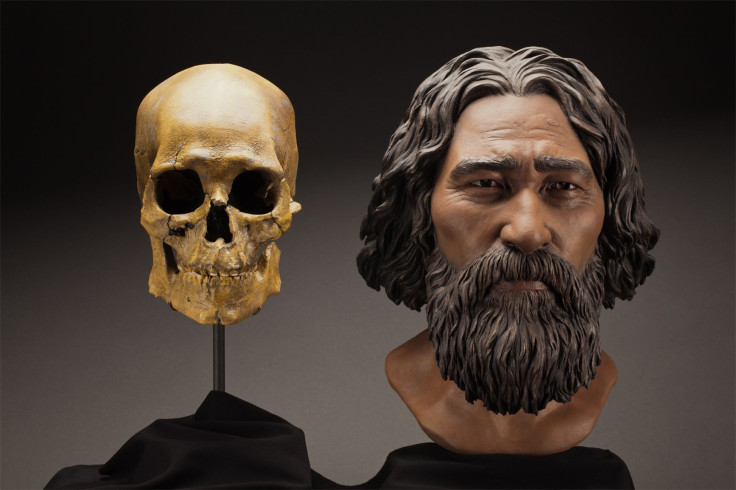Who Is The Kennewick Man? 5 Facts About The 9,000-Year-Old ‘Mystery’ North American

Kennewick Man’s remains, discovered nearly 20 years ago along the banks of the Columbia River in Washington State, comprise one of the most complete ancient skeletons ever found. Radiocarbon dating revealed Kennewick Man died more than 9,000 years ago around the age of 40. He stood 5-foot-7 -- taller than most people of his time -- weighed roughly 163 pounds, and was right handed and muscular.
However, his anatomical features were unlike those of modern Native Americans, a detail that has shrouded Kennewick Man’s origin in mystery. His bone structure is at the center of a spirited scientific debate over where Kennewick Man could have come from. Did he travel down from present-day Alaska? The Aleutian Islands? Or did his journey begin in Asia, as some scholars have suggested? The answer could significantly change how scientists think about the ancestry of the first North Americans.
Kennewick Man’s story is not new; his legacy has been the subject of countless lectures and interviews and even sparked a legal battle in 2004 between Native American preservationists who wanted the remains returned for reburial and scientists who wanted to learn more. But a book by Smithsonian forensic anthropologist Douglas Owsley to be published next month looks at the origin of Kennewick Man with fresh insight, providing the most thorough analysis yet of any Paleoamerican -- a name for the first peoples who entered North America during the last ice age. The book is titled “Kennewick Man: The Scientific Investigation of an Ancient American Skeleton.”
“The human skeleton teaches us a wealth of information about human population dynamics across time,” Owsley said in a statement. “Kennewick Man has become a teacher for all ages, acting as an informative ambassador to the ancient past in North America.”
Here are five things we know for certain about Kennewick Man:
He is unlike any living human population. Based on skull and bone shape, Kennewick Man’s closest contemporary relatives are the Moriori people of the Chatham Islands, an archipelago in the Pacific Ocean about 680 kilometers (420 miles) southeast of New Zealand.
He was a seal hunter whose diet was low in sugar and starch. Kennewick Man’s teeth were cavity-free and worn down to the roots -- a common trait of teeth in prehistoric times, the Smithsonian said.
He suffered several life-threatening injuries. Five of Kennewick Man’s ribs were broken and he had two small dents in his skull. He also lived with a bad shoulder from constant spear throwing and a stone spear point was embedded in his hip.
He was intentionally buried. Researchers say they believe Kennewick Man belonged to an ancient population of seafarers who were among the first to call North America home. They likely buried Kennewick Man out of care and respect.
His wide-bodied frame was characteristic of people adapted to cold environments. It would have helped him navigate the steppe-like topography of Northwest America.
© Copyright IBTimes 2024. All rights reserved.












